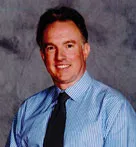LETTER FROM THE CEO: APRIL 2015
What We Now Know About Preventing Abuse
I was at a meeting this past week in Dallas to meet the new CEO of YMCA of the USA and hear about the state of the Y nationally. During those two days, leaders of Ys from across the country attended a variety of lectures and workshops. I opted for a seminar put on by our national partner Praesidium, a company that specializes in helping organizations prevent the sexual abuse of children.
Our little organization here in the Boulder Valley was a pilot site for the program several years ago, and we have since inculcated the Praesidium program into our operations. However, that was several years ago, and I wanted to make sure I was aware of any changes or new information.
I want to share some facts that they shared about childhood sexual abuse—because we want you, as parents, to be armed as best you can. Praesidium gathered the following information by studying the root causes of more than 5,000 abuse cases and monitoring current national statistics.
You know how some parents don’t even let their kids out of their yards? Sure, this is safer than letting them roam free—but not much safer. These restrictions have partially led to a reduction in calories burned and increase in childhood obesity. In actuality, only 10 percent of abuse cases are “stranger danger;” the other 90 percent are carried out by people who you and your children know. For an abuser to be able to abuse, they must have three things: access, privacy and control. If any of these are removed, then the abuse should be prevented. Abusers have to groom kids, and they usually start this by appropriate touching. This is why we as parents need to speak to our kids regularly about what happened during their day. An appropriate touch will not get on their radar, but it may tweak yours. Also, pedophiles may look for particular types of kids to target: Children who are ADHD, ADD, hyper, lonely and so on. Basically they are looking for a the kid who is outside of the mainstream and needs a “buddy.” A pedophile may give older kids "gifts," such as alcohol, drugs or pornography; later, they may blackmail them into not telling anyone about the abuse by threatening to expose the alcohol or drug usage. While this is all going on, the pedophile is also grooming the community to see him or her as a wonderful person who cares deeply about kids.
In a study of 5,000 abuse cases, there were eight areas of policy or procedure that influence whether the abuse happens or not:
Policies of the organization – Does a pedophile see that an organization has policies designed specifically to prevent abuse?
Screening and selection of staff – Here is a tricky one. We hold up those background checks as the gold standard for preventing abuse. However, the estimate is that only 4-5 percent of abusers have an arrest or conviction that will show in a background check.
Training – Are staff members properly trained to know the difference between appropriate and inappropriate communication and behavior with children?
Monitoring and supervision – Supervisors are trained to watch for the signs of grooming and then trained to act upon suspicions.
Internal feedback systems – Does an organization have ways for staff and supervisors to report issues and behavior of staff and other kids (remember some abuse is kid-on-kid)?
Consumer participation – Are YOU aware of what to look out for? Did you know our staff is not allowed to babysit your kids or do one-on-one activities with them outside of the Y?
Responding to incidents or “gut feelings” – The little voice in the back of our heads is what allowed us to evolve. It has validity in many circumstances. Staff, volunteers and participants need to report any suspicions so the organization can respond.
Administrative practices – What does the organization do as a whole to safeguard our kids and make sure they are safe? It is more than just talking about it, it is action and institutional behavior.
At the Y, we try to create an environment in which there is openness about our policies, procedures and programs, so we can fill any gaps that leave kids at risk. There is also an issue of reality versus an idealized world. Kids need significant adult presence in their lives to help them mature and grow properly, so we can’t just lock them away from other people. What we can do is make sure that those relationships are safe and appropriate.
This is where you come in: As parents, you need to ask yourselves what is safe and appropriate for your family and kids. How are you going to balance safety with raising a child who is emotionally mature? As parents we need to know who is talking to our kids and who their new friends are. There is an age when their texts are private, but that is best decided by you and not your child. There are ratings on games, TV shows and movies for a reason. Usually age restrictions will match emotional maturity levels, where the content of the media matches the child's ability to appropriately explore the content. A misalignment of curiosity/behavior and emotional maturity can leave a door open to abusers.
Once again, we cannot lock our kids up and we cannot wrap them in bubble wrap, but we can stay on top of their daily lives and act appropriately. The Y asks that you partner with us and any other relevant organizations to protect our community from abusers. If you want more information, go to the Praesidium website.
Thank You,
Chris Coker
CEO/President of YMCA of Boulder Valley

